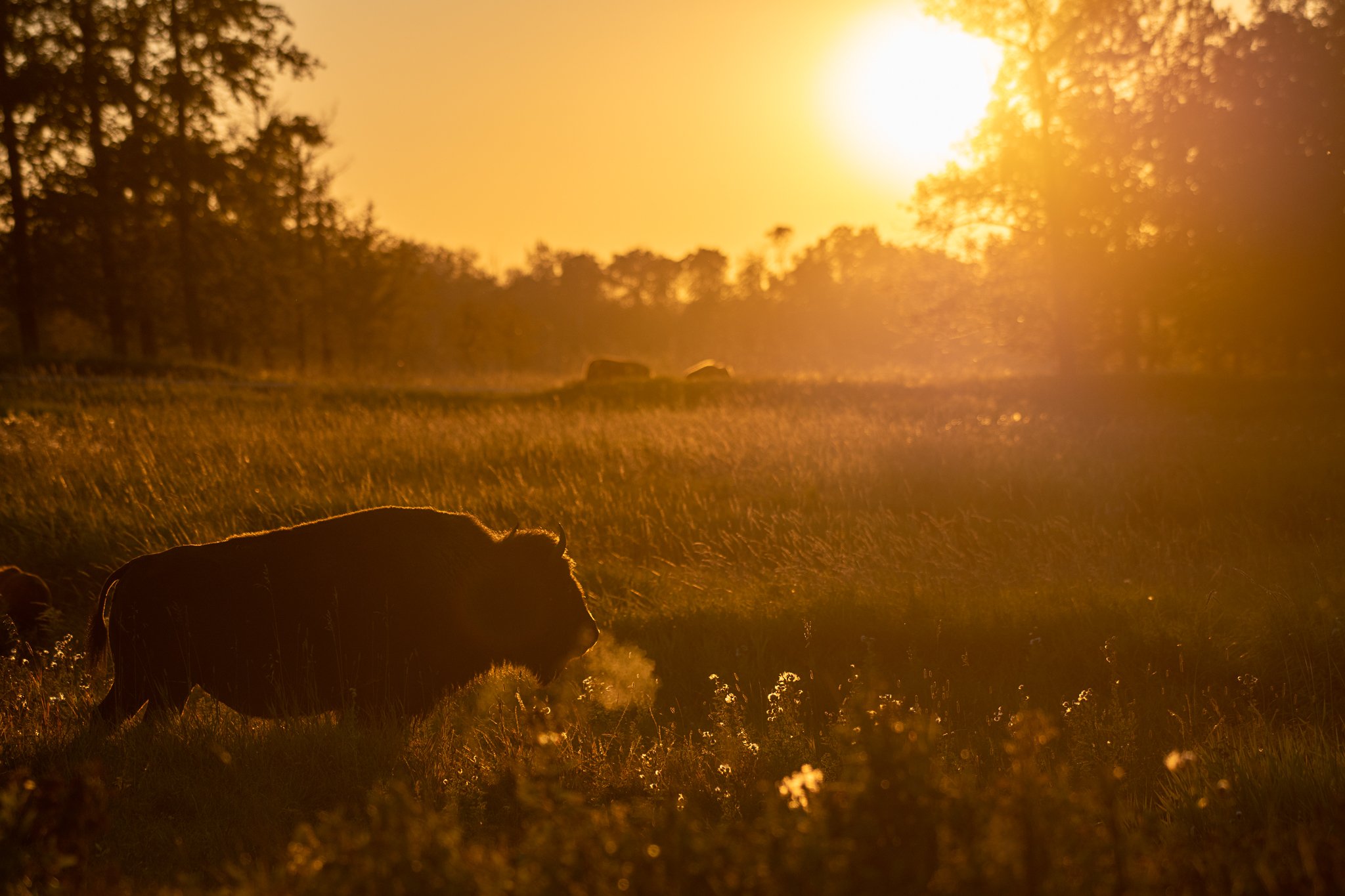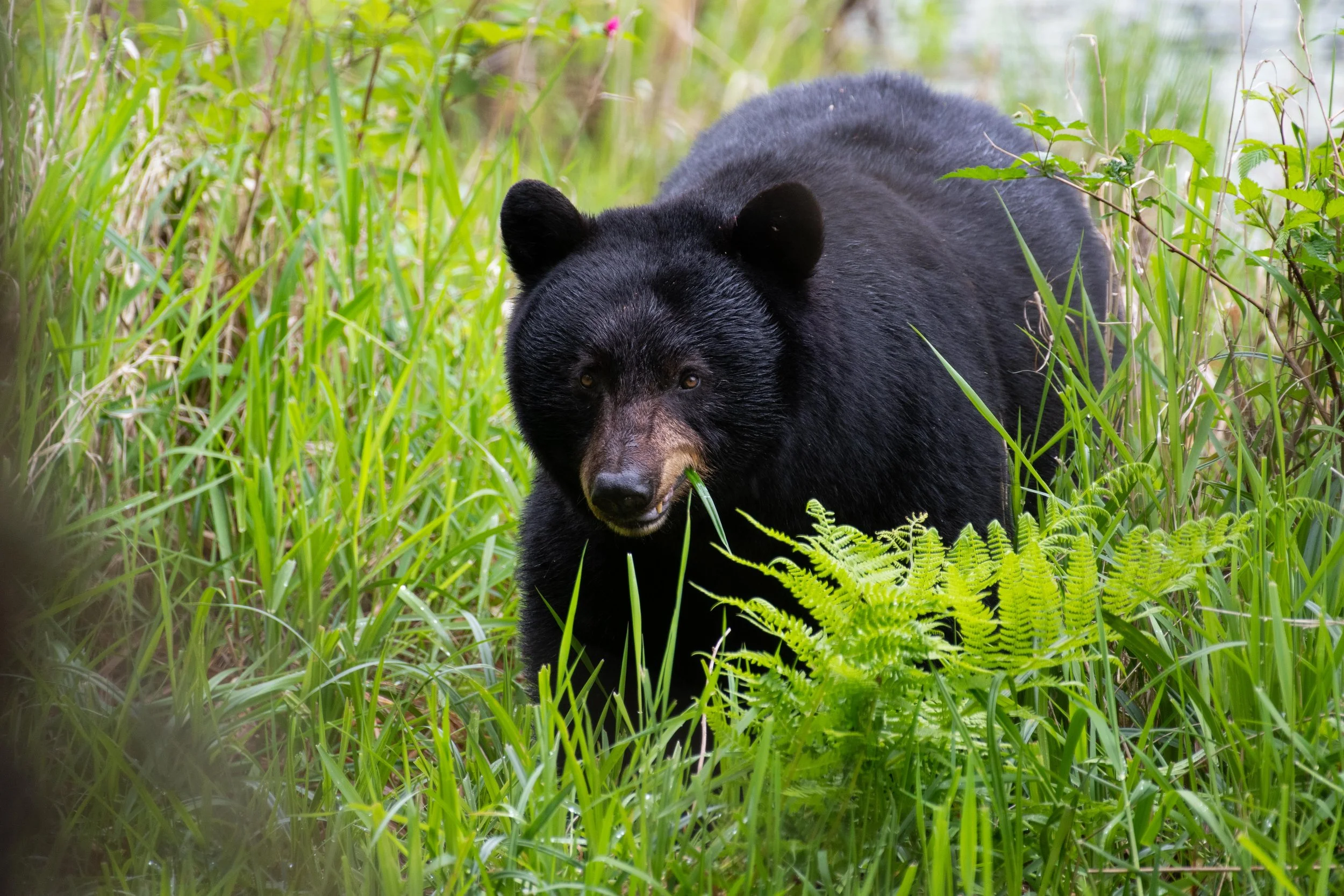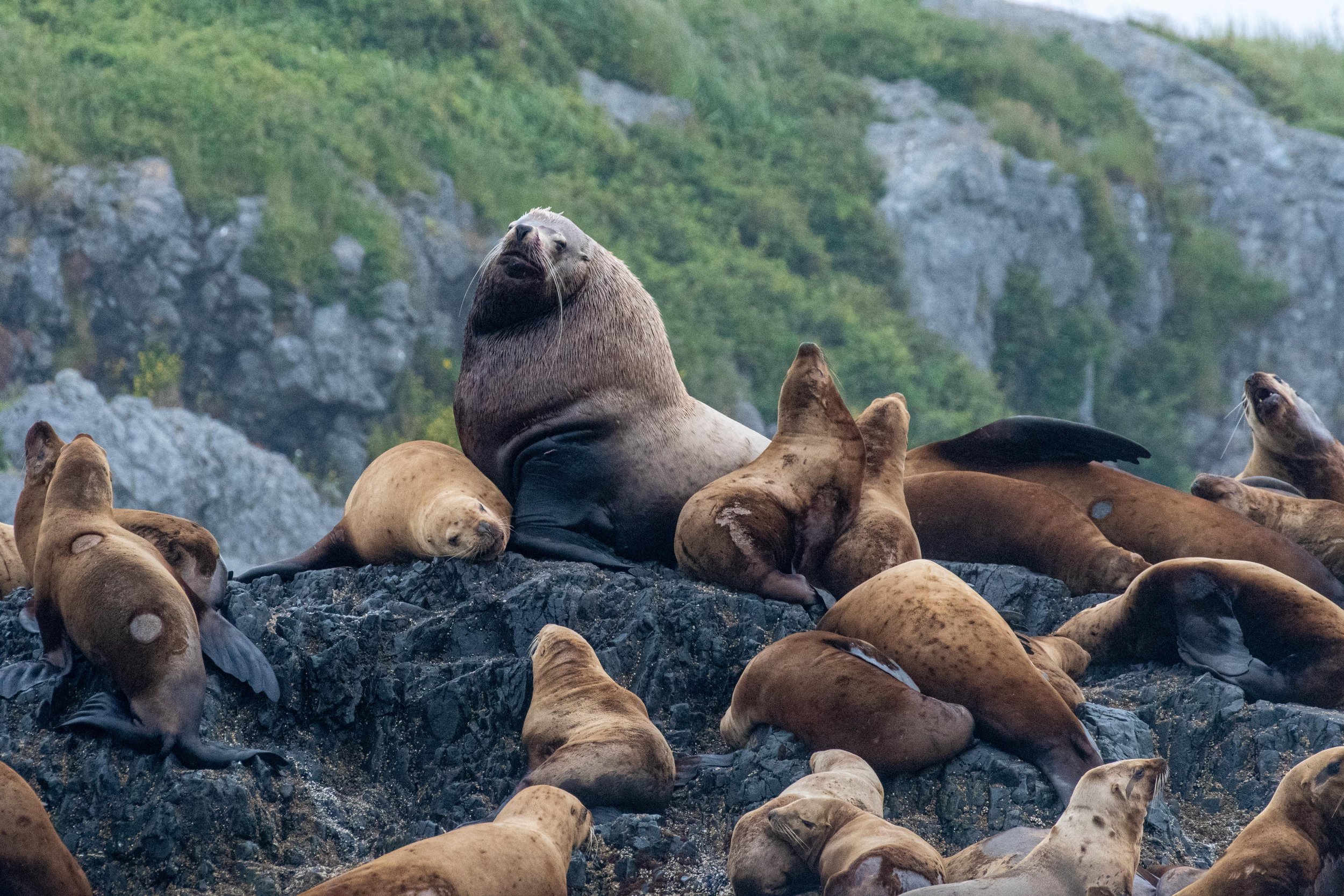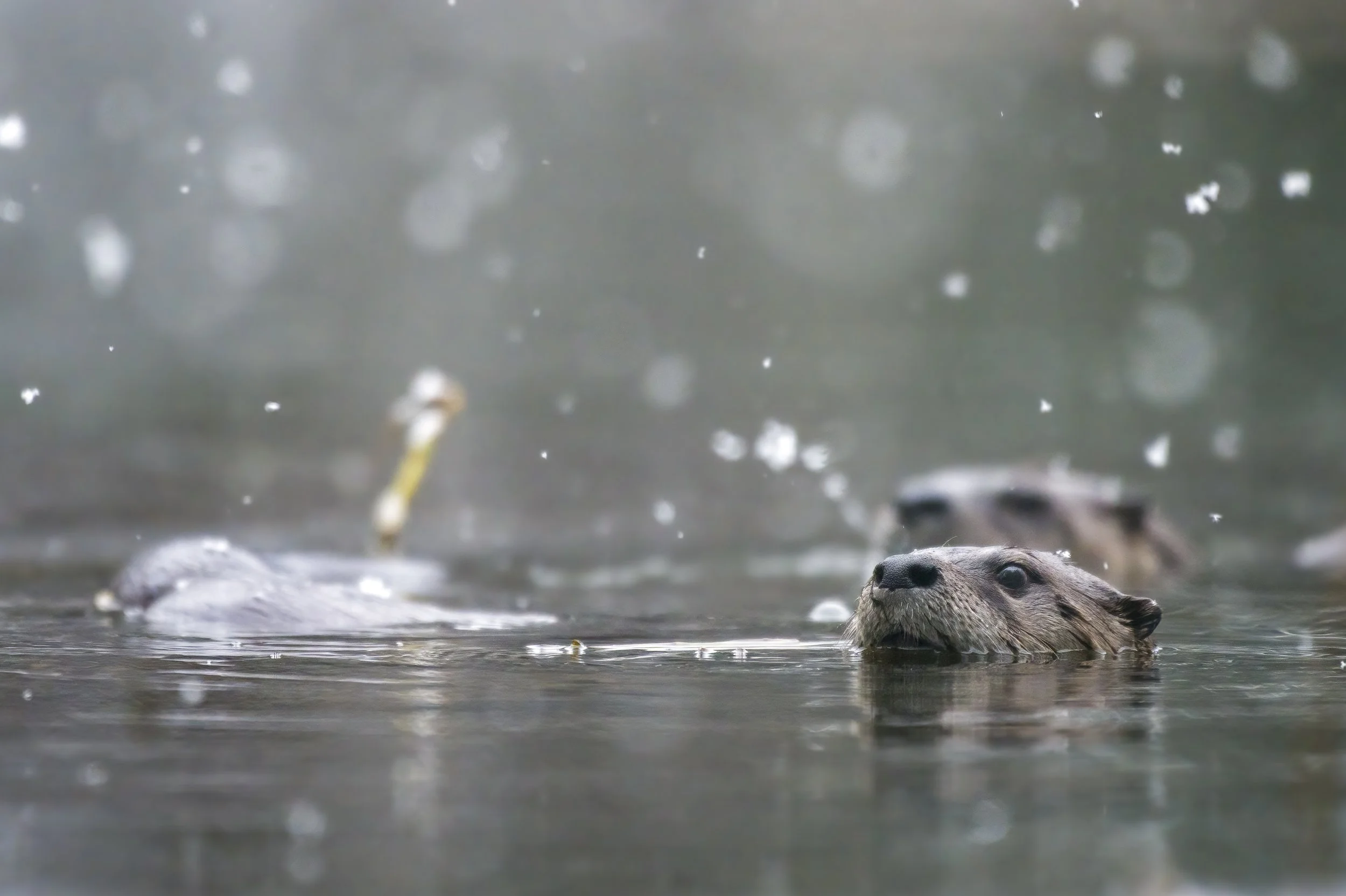
The Book of Beasts
Bears
Often perceived as fearsome creatures, the Black Bear is typically a peaceful forager. A mothers deep bond with her cubs means she will stop at nothing to protect them. So long as you keep your distance and never get between a mother and cubs, these beautiful creatures can be a real treat to observe in the wild.
The American Black Bear
(Ursus Americanus)
Evolving in the forests of North America has made Black Bears into the ultimate climber. Cubs are able to climb as soon as they leave the den for the first time, and will spend much of their young life finding the forest canopy as a safe haven. Even in adulthood the Black Bear is able to scale trees in the blink of an eye.
Canines
The Coyote
(Canis Latrans)
A sly beast, the Coyote is known far and wide for it’s cunning and clever demeanor. Sometimes known as Song Dogs, these relatives of the Wolf are remarkably social creatures. Tight knit family bonds allow packs to take down prey that a lone Coyote wouldn’t be able to tackle.
Remarkably intelligent creatures, the Coyote has followed humanity across North America with great success. As humans remove predators from ecosystems near cities, the Coyote finds a chance to move in. Thanks to their adaptable nature this species has managed to colonize the continent alongside us.
Lagomorphs
The Snowshoe Hare
(Lepus Americanus)
The Snowshoe Hare, a symbol of resilience in the harsh Canadian winter. Equipped with massive hind feet that allow the hare to pounce over the deepest snow, very few animals are able to catch a Snowshoe on the run. As days get shorter their fur begins to turn snow white, the perfect camouflage when everything around wants to eat you.
The American Pika
(Ochotona Princeps)
The American Pika is a true alpine pioneer. These tough relatives of the rabbit spend an impressive 8 months of the year with their burrows buried beneath a thick sheet of snow. While most animals hibernate under these circumstances, the Pika have another strategy. Busy summer months are spent gathering and storing vast amounts of flowers and grasses in their boulder burrows, rations that will last them the long winter. These piles of plants are neatly stacked together in ‘haypiles’ and left to dry to avoid going moldy. Clever little critters!
The mountains of May are full of new life as the next generations of all sorts of critters spring forth into a brave new world. Life for a juvenile American Pika is fast, with only a few short months until winters first grip takes hold. These hamster sized lagomorphs must learn as much as they can from their den mates while avoiding the wide array of predators eager to make a meal of something so small. While the boulders keep most threats at bay, smaller carnivores like weasels are perfectly adapted to hunting small prey in tightly confined spaces. A young Pika must be quick in mind and body if it hopes to survive long.
Felines
The Canada Lynx
(Lynx Canadensis)
A true ghost of the frozen north, the Canada Lynx is a formidable predator. The massive paws of the Lynx allow it to walk effortlessly through snow in search of it’s favourite prey: the Snowshoe Hare. It is so dependent on this prey that its own population fluctuations with that of the hare.
-
The Bison
(Bison Latifrons)
For the last few hundred years a sight this like would have been immensely rare. As European settlers started to colonize North America, they took the Bison down with them. In a single generation the population of Bison in North America fell from an estimated 30-60 million down to just around 300. They were hunted to the brink of extinction as part of a war on indigenous culture, a move that has had lasting consequence on this continents ecosystems. Thanks to careful conservation efforts, this proud animal once again roams a growing part of its ancestral home.
North America’s largest mammal, a male Bison can weigh up to 2,000 pounds. Even more impressive: these animals can run at speeds up to 55 kilometers an hour. In prehistoric times the plains of this continent had herds 100,000 strong. Today the Bison stands as one of Nature’s most resilient creatures.
The Steller Sea Lion
(Eumetopias Jubatus)
The largest Sea Lions, Stellers are an impressive animal to behold. Their formidable size is matched by their remarkable agility in the water, a trait that has made them into fine hunters. Colonies of these sea beasts dot the coastline of British Columbia northward into Alaska.
Mustelids
The Sea Otter
(Enhydra Lutris)
Intelligent, resilient, and adorable: the Sea Otter is one of the oceans many gems. Once extinct in much of their North American range, the Sea Otter has begun to reclaim the territory it once held. Sea Otters play a key role in their ecosystem, and their extinction left our waters in a fragile state. With their return the coastline can begin to recover and return to its once bountiful state, all thanks to recent conservation efforts.
The River Otter
(Lontra Canadensis)
River Otters have their adaptability and tight family bonds to thank for their great success as a species. These remarkable mammals thrive in a wide variety of environments and have adapted to human environments very well. Despite their name, River Otters can often be seen in the ocean foraging for crabs and fish much like their cousin the Sea Otter. Though River Otters aren’t able to fill the same role as the Sea Otter, they have done well at establishing firm populations in areas where Sea Otters have been exterminated in the past.
The Short-Tailed Weasel
(Mustela Erminea)
Don’t let their looks fool you, these cunning little carnivores are a force to be reckoned with. Only weighing an average of 260g these tiny beasts are capable are incredible speed and agility as they search tunnel networks and rocky hideouts for their prey. These clever killers love to eat just about anything they can catch and dispatch quickly, sometimes even killing Pika or baby rabbits! Once they get on their prey they quickly bite the back of their targets neck, a merciful end delivered by razor sharp fangs.














